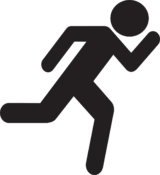What Happens During a Doctor’s Visit for a Head Injury?
Head injuries can be frightening, whether it’s from a fall, sports activity, or an accidental bump. Knowing what to expect during a doctor’s visit can help ease anxiety and ensure you’re prepared for the steps ahead. Let’s delve into what typically happens during a medical evaluation for a head injury. 🏥
Table of Contents
1. Introduction
2. Initial Assessment: Understanding the Injury
3. Diagnostic Tests: What to Expect
4. Treatment Plans: Personalized Care
5. Follow-Up Care and Monitoring
6. Conclusion
7. FAQs
Initial Assessment: Understanding the Injury
When you first arrive at the doctor’s office, the healthcare provider will conduct an initial assessment. This step is crucial for understanding the severity of the head injury. 🧠
The doctor will ask questions about:
– How the injury occurred
– Any symptoms experienced, such as dizziness or nausea
– The time elapsed since the injury
They may also perform a preliminary physical exam to check for visible signs of trauma and to evaluate the patient’s cognitive function, such as memory and concentration tests. This process helps in determining the next steps for diagnosis and treatment.
Diagnostic Tests: What to Expect
Depending on the initial assessment, the doctor might recommend certain diagnostic tests to get a clearer picture of the injury. 📋
Common Diagnostic Tests Include:
– **CT Scan**: This imaging test helps in identifying fractures or internal bleeding.
– **MRI**: Used for a more detailed view of brain tissue, especially if symptoms persist.
– **X-rays**: Primarily used to rule out fractures of the skull or spine.
These tests are crucial in forming a comprehensive view of the injury, ensuring nothing is overlooked.
Treatment Plans: Personalized Care
Once the diagnosis is confirmed, your doctor will develop a treatment plan tailored to your specific needs. 🩹
Treatment options may include:
– **Rest and Observation**: For mild injuries, rest is often prescribed, along with monitoring symptoms at home.
– **Medication**: Pain relief or anti-inflammatory drugs might be recommended to manage symptoms.
– **Surgery**: In severe cases, surgical intervention might be necessary to address issues like bleeding or swelling.
Your doctor will explain the treatment plan, ensuring you understand your recovery process.
Follow-Up Care and Monitoring
Recovery from a head injury doesn’t end with the first doctor’s visit. Follow-up care is essential to ensure a full recovery. 🔄
During follow-up appointments, your doctor will:
– Monitor your recovery progress
– Adjust treatment as necessary
– Provide guidance on gradually returning to normal activities
It’s important to communicate any new symptoms or concerns during these visits to prevent complications.
Conclusion
Understanding what happens during a doctor’s visit for a head injury can alleviate some of the stress and uncertainty. From the initial assessment to follow-up care, each step is designed to ensure a thorough evaluation and effective recovery plan. Remember, if you or someone you know experiences a head injury, seek medical attention promptly for the best outcome. 🚑
FAQs
1. How long should I rest after a head injury?
Rest periods vary depending on the injury’s severity. Your doctor will provide specific guidance tailored to your situation.
2. Are headaches normal after a head injury?
Yes, headaches can be a common symptom after a head injury. However, if they persist or worsen, consult your doctor.
3. When should I return to sports after a concussion?
Returning to sports should only occur after receiving medical clearance. Your doctor will advise when it’s safe based on your recovery progress.
4. What symptoms indicate a more serious head injury?
Symptoms such as loss of consciousness, severe headache, vomiting, or confusion require immediate medical attention.
5. Can children handle head injuries differently than adults?
Yes, children’s recovery and symptoms can differ. Always consult a pediatrician for head injuries in children for appropriate care.

